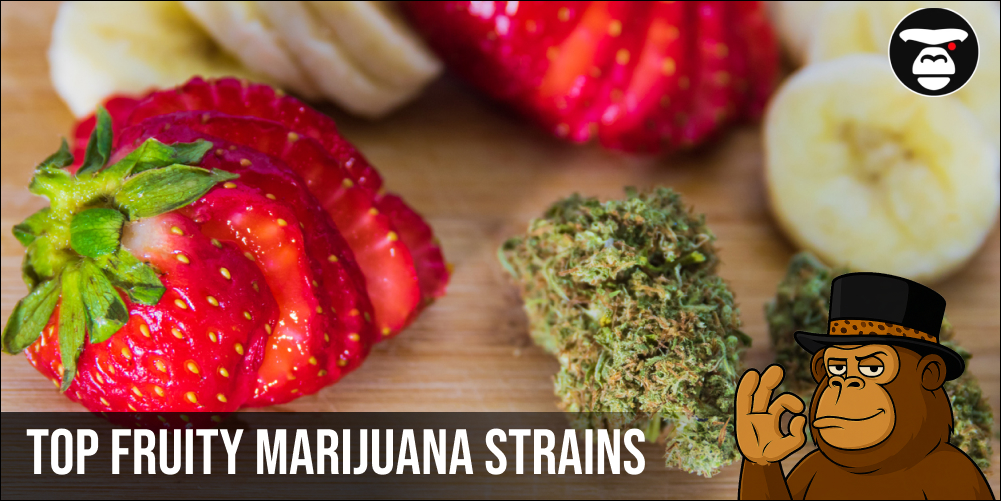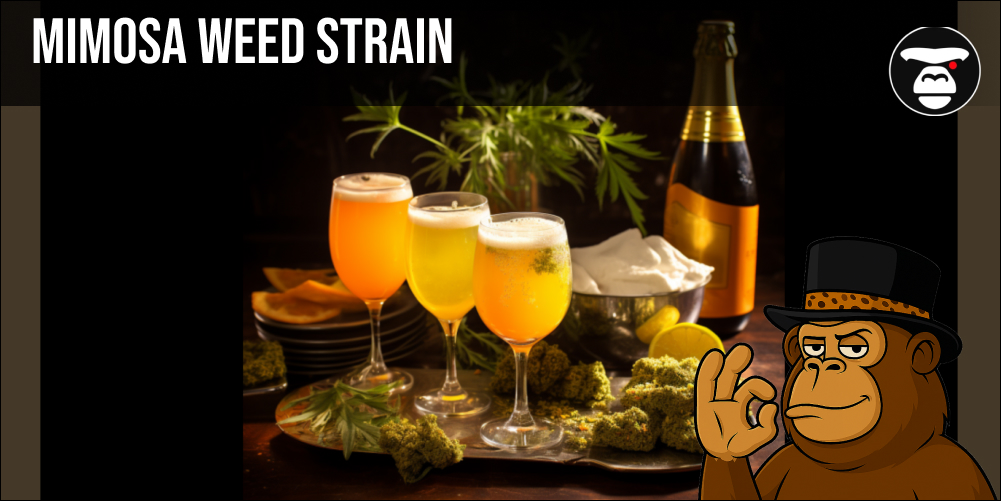
Weed Education
How to identify a cannabis strains just by looking at it?

The world of cannabis strains is as diverse as it is fascinating, with a plethora of strains each offering unique experiences. For enthusiasts and connoisseurs alike, the ability to identify a cannabis strain just by looking at it is a skill akin to a wine expert discerning varieties through taste. This article delves into the art and science of visually distinguishing cannabis strains, providing valuable insights and guidance.
Before diving into identification, it’s crucial to understand what constitutes a cannabis strain. A strain is a specific breed of the cannabis plant, developed to enhance certain characteristics such as flavor, aroma, effects, and appearance.
- Guide to Blending Different Cannabis Strains
- How Cannabis Freezing Can Enhance Your Experience?
- Cannabis and Video Games: A High-Level Play
Variety of Cannabis Strains

- Indica Strains: Indica are known for their relaxing effects and are often used for stress relief and insomnia. They typically have a compact, bushy appearance with broad, dark green leaves.
- Sativa Strains: Sativa are associated with more energizing effects, often used for their uplifting and creative benefits. They are characterized by taller plants with narrow, light green leaves.
- Hybrid Strains: Hybrid are bred from both Indica and Sativa plants and are designed to offer a balance of the characteristics of both.
When it comes to visually identifying cannabis strains, several key aspects come into play. While it’s challenging to pinpoint the exact strain just by looking, certain physical characteristics can offer clues about its type and properties. These visual cues include the structure and color of the buds, the presence and color of trichomes, and the overall shape and size of the plant.
Discover the Bliss of Watermelon Zkittlez 2 Original Mini Joints, Maximum Flavor! Dive into the vibrant essence of Watermelon Zkittlez, the indica-dominant hybrid that promises a deeply relaxing and delightfully sweet journey.
Leaf Structure

The leaf structure of a cannabis plant is one of the most immediate and visible indicators that can hint at its strain type. Indica varieties are characterized by their broad and full leaves, a distinct feature that sets them apart visually. These leaves are typically darker in color, often a deep, lush green, and are densely packed. The shape and structure of Indica leaves are a direct adaptation to the plant’s natural growing conditions, which are typically in cooler climates with shorter growing seasons.
On the other hand, Sativa leaves present a stark contrast. They are known for being longer and narrower, with a lighter green hue. The slender shape of Sativa leaves is an adaptation to their natural tropical and warm environment, where longer growing seasons are common. Hybrids, which are a cross between Indica and Sativa strains, display a combination of these features. The specific leaf structure in hybrids depends largely on their genetic lineage, showing a mix of broadness and length that varies depending on the dominant strain in their genetic makeup.
Plant Size and Shap

Indica plants are known for their compact and bushy stature, characteristics that make them particularly well-suited for indoor cultivation. Typically, these plants don’t grow very tall, but they tend to spread outwards, creating a dense canopy of leaves and buds. This growth pattern is an adaptation to the harsh, dry, and colder climates of their native regions. The shorter stature of Indica plants not only makes them ideal for limited spaces but also allows for more efficient light absorption under artificial lighting conditions, a common setup in indoor growing.
In contrast, Sativa plants exhibit a markedly different growth pattern, characterized by their impressive height, which can reach up to 12 feet. These plants are generally better suited for outdoor cultivation due to their size. Sativa plants have a more open structure, allowing sunlight to penetrate through the plant, which is beneficial in their natural, sun-drenched tropical environments.
Hybrids, which combine traits from both Indica and Sativa strains, display a wide variety of sizes and shapes. The physical characteristics of hybrids depend on their specific genetic lineage, resulting in a diverse range of plants that can fit different cultivation setups and preferences.
Experience luxury with Lemon Cherry Gelato Preroll, a potent 1.3g Indica blend infused with Hash Rosin and kief. Relish in the tart lemon, sweet cherry, and creamy gelato flavors, offering a euphoric, relaxing journey.
Bud Structure

The buds of cannabis plants offer significant insights into their strain types, with distinct characteristics observable in Indica and Sativa varieties. Indica strains are notable for their dense and tightly-packed buds. These buds are often smaller but heavier due to their density, a feature that reflects the plant’s adaptation to the cooler and harsher environments of their origin. The compactness of Indica buds is not just a visual trait but also impacts the texture and the overall smoking experience, typically resulting in a smooth and rich flavor profile.
In contrast, Sativa strains produce buds that are more elongated and less dense compared to their Indica counterparts. These buds are generally larger, lighter, and airier, mirroring the Sativa plant’s natural adaptation to warm and humid climates. The structure of Sativa buds allows for greater airflow through the plant, reducing the risk of mold and mildew in these typically moist environments. Hybrid strains, as a blend of Indica and Sativa genetics, showcase a variety of bud structures.
The appearance of hybrid buds can range from dense and compact to elongated and loose, depending on their dominant genetic traits.
Trichome Density

Trichomes play a pivotal role in identifying and understanding the characteristics of different cannabis strains. These tiny, crystal-like structures are found on the surface of the buds and leaves of the cannabis plant. Trichomes are not just visually striking; they are crucial for the plant’s potency and aroma. They serve as the primary production site for cannabinoids, such as THC and CBD, which are the compounds responsible for the plant’s psychoactive and therapeutic effects. Additionally, trichomes also produce terpenes, the chemicals that give cannabis its distinctive aroma and flavor.
Indica strains are particularly noted for their high density of trichomes, which often gives them a frosty or glittery appearance. This abundance of trichomes in Indica varieties is a protective adaptation to their native environments, which are typically harsh and arid. The thick layer of trichomes helps to shield the plant from external stress factors. On the other hand, Sativa strains usually have a lower density of trichomes, contributing to their less frosty appearance.
This difference in trichome density between Indica and Sativa strains is not just a visual trait but also impacts the potency and the type of effects each strain offers.
Indulge in tranquility with High Octane Double Blunt, 4g of pure Indica bliss in each box. Perfect for easing stress, pain, and insomnia with its 31.6% THC content, and a rich blend of sour lemon and earthy aromas for a serene night in.
Coloration

The color of cannabis strains is another aspect where Indica and Sativa varieties exhibit distinct differences. Indica strains often possess a deeper, richer green color, a visual attribute that can sometimes be accompanied by hints of purple. This deeper hue is indicative of the dense foliage and the specific flavonoids present in these plants. The presence of purple, a result of a compound called anthocyanin, becomes more pronounced in colder climates. Such variations in color not only add to the visual appeal of Indica strains but also reflect their genetic and environmental adaptations.
Sativa strains, in contrast, are typically characterized by a lighter shade of green. This lighter coloration is reflective of their growth in sunnier, more tropical climates, and it contributes to the plant’s overall ability to absorb sunlight efficiently. When it comes to hybrid strains, the spectrum of colors becomes even broader. Hybrids can display a dazzling array of colors, ranging from the traditional greens to more exotic hues like blue, pink, and orange. These vibrant colors are a testament to the diverse genetic heritage of hybrid strains, combining the traits of both Indica and Sativa varieties.



























